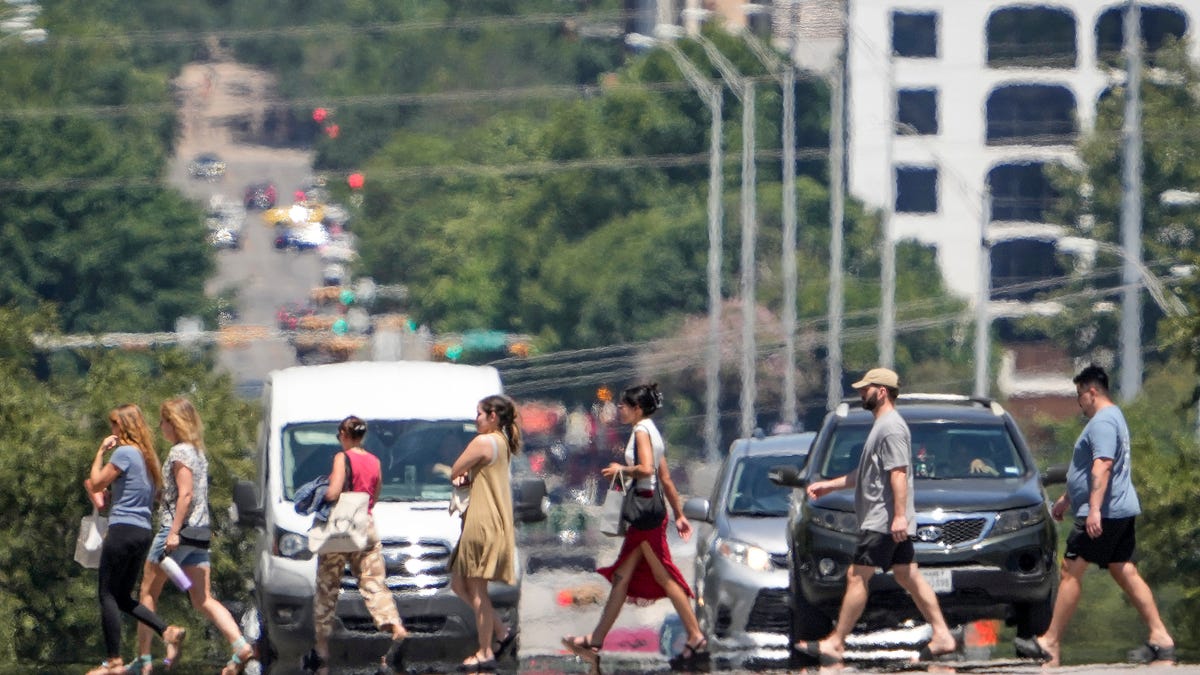Millions of Americans endure intense heat as a heat dome affects Gulf Coast states
Searing weather is predicted this week, with temperatures near or breaking records in parts of Arizona, New Mexico, and Texas.
A heat dome spanning the southwestern U.S. and Texas has created dangerous conditions for tens of millions of Americans, with predictions of record-breaking temperatures in these areas.
As of early Wednesday, over 23 million Americans were under some form of heat advisory or warning, according to Heat.gov. The National Weather Service is issuing alerts for “major” and “extreme” heat risks across large parts of the southwestern states and Texas, as well as sections of the Gulf Coast.
“Hazardous heat persists in Texas and the Gulf Coast, with temperatures climbing into the triple digits,” the weather service commented on Tuesday.
Forecasts suggest that the extreme heat will extend through the week, with areas in Arizona, New Mexico, and Texas likely to see temperatures reaching near-record highs, as indicated by the weather service.
The weather service reported that Phoenix saw temperatures hit 112 degrees Fahrenheit on Tuesday afternoon — just one degree shy of the 2019 record. Meanwhile, in Houston, meteorologists predict the hottest days of the year will occur on Tuesday and Wednesday, with temperatures ranging from 100 to 105 degrees, and heat indices soaring between 111 and 116 degrees.
The forecast indicates that central and eastern New Mexico will experience moderate to significant heat risk through Thursday, posing a higher risk of heat-related illnesses, especially for vulnerable groups and outdoor workers.
This ongoing heat wave occurs during a record-breaking hot summer. Much of the nation has been experiencing above-average temperatures recently, including a prolonged heat wave in July that was partly a result of climate change.
Heat and humidity overwhelm the Southern Plains
Extreme heat and humidity are also affecting the Southern Plains, with temperatures ranging from the upper 90s to triple digits expected to persist through much of the week. The heat is expected to push northward into the Central Plains by Friday and Saturday.
“The mix of high temperatures and humidity will result in daily heat indices reaching or exceeding 110°F,” stated the weather service.
Although the heat wave is anticipated to “gradually ease” over the weekend, the weather service warns that afternoon heat indices will likely stay in the upper 90s to mid-100s in the Southern Plains and Gulf Coast into early next week.
Extreme temperatures in Texas challenge the electric grid
However, the council, which oversees the electric grid for about 27 million customers, reassured that the power supply was stable and sufficient for current demands.
While the actual number of homes a megawatt can power changes based on region and local consumption, experts from the Northwest Power and Conservation Council estimate that typically one megawatt can supply power to up to 800 homes under normal conditions. In Texas, during peak demand periods, one megawatt typically powers around 200 homes and businesses, according to the Electric Reliability Council of Texas.
In Houston, which is Texas’ largest city, temperatures were forecasted to reach 103 degrees on Tuesday before dropping to 100 degrees on Wednesday, as per AccuWeather meteorologists.
Understanding the dangers of heat-related illnesses
According to the World Health Organization, heat stress is the leading cause of weather-related fatalities.
“The frequency, duration, intensity, and impact of heat waves and sustained extreme heat are increasing due to climate change,” the WHO noted. “Even mild or moderate heat waves can adversely affect the health and quality of life for vulnerable populations.”
Although many heat-related deaths and ailments can be avoided, the Centers for Disease Control and Prevention (CDC) reports that around 1,220 people in the U.S. lose their lives each year due to extreme heat. If untreated, heat-related illnesses can escalate quickly, as the CDC warns.
Extreme temperatures hamper the body’s ability to regulate its internal temperature, leading to various health issues. Initially, signs of heat-related illnesses include extreme thirst and muscle cramps, the CDC indicates. Severe cases can escalate to heat exhaustion or heatstroke.
To combat heat-related ailments, the CDC recommends finding cooler places and staying hydrated with water or sports drinks during extremely warm days. Tips for alleviating severe heat-related symptoms include loosening clothing, applying cool, damp cloths to the skin, or taking a cool bath. It’s crucial to seek medical attention if symptoms persist or worsen.
What is a heat dome?
A heat dome forms when a persistent high-pressure area traps heat in a region, as explained by William Gallus, a professor of atmospheric science at Iowa State University.
“The heat dome can span multiple states and may last days to weeks, subjecting people, crops, and wildlife below to stagnant, high temperatures that resemble an oven,” Gallus stated in an article in The Conversation.
Contributors: Doyle Rice and Janet Loehrke, YSL News; Trilce Estrada Olvera, Arizona Republic; Reuters

